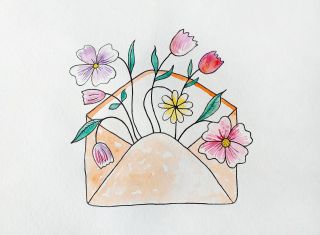Identity
Becoming Friends With Your Future Self
How much can we know now about who we’ll be tomorrow?
Updated July 24, 2023 Reviewed by Abigail Fagan
Key points
- People often don't make choices in the present that will benefit their future self.
- The bias of being fixated on the future at the expense of the present is called hyperopia.
- Making the future more vivid can help create an emotional connection between the present and future selves.

On average, humans get around 4,000 weeks of lifespan. All that we ever dreamed of achieving, all our joys and heartache, all our ever-fleeting moments of experiencing existence occur within this “absurdly, terrifyingly, insultingly short” reserve of time, writer Oliver Burkeman reminds us.
Despite being well aware of its finitude, our relationship with time is often more inept than grateful. Take, for example, your notion of the future you. How do you feel towards the person you’ll be in five months or five years from now? To explore this question, researchers have examined how much people are willing to sacrifice their immediate comfort for the benefit of their future selves — for example, by saving for retirement or foregoing a luscious piece of cheesecake for an apple.
Our future selves appear so distant to our present selves, that we tend to conduct our lives as if tomorrow’s us is someone else’s problem. We’d rather spend the money now and tuck into that second serving of dessert, even while knowing that we’re not doing any favors to ourselves down the timeline. “We’ll worry about the future when it gets here,” our actions seem to declare. Researchers call this over-fucus on the present at the expense of the future myopia.
When it comes to happiness, however, it’s our present selves that habitually get deprived. How often have you deferred feeling happy to the future you? In the middle of a busy workday, you think, I’ll be happy when I get this done. When you get the task done, you think, I’ll be happy when I’m on vacation. Even as you lounge at the very beach where you were certain the future you would finally find happiness, you start anticipating the delights that are yet to come, I can’t wait ‘til dinner…
It’s as if we have stowed away the promise of true happiness in a package addressed to us at some future time when circumstances will be just right for it to transpire. Yet, the package keeps getting lost. As a result, we are left robbed of wholehearted enjoyment of the moment in front of us. Researchers call this bias of being fixated on the future at the expense of the present hyperopia.

“When we focus too much on arriving at some finite destination in the future, where we think we’ll have narrative closure and will finally be happy, we miss the whole journey along the way. We miss the present,” says Hal Hershfield, who studies how people’s perceptions of time affect their decision-making.
Meet your new best friend: the future you
As Hershfield explores in his new book Your Future Self: How to Make Tomorrow Better Today (2023), the reason why our future selves seem like strangers to us is partially due to the abstractness and uncertainty of tomorrow. A central question of Hershfield’s research is how to make the future more vivid, in order to create an emotional connection between the present and future selves. Strengthening this relationship is important because it can facilitate behaviors that benefit our well-being both now and later.
For example, exercising yields gains in real-time (releases endorphins and boosts mood) and in the future (improves health biomarkers). “Doing something for my future self is like giving a gift to my future self,” Hershfield says. “Just like we can take pleasure in being generous with our family and friends, we could learn to enjoy doing something that benefits our future selves.”
5 ways to strengthen the connection
There are various creative ways to keep the spark of sympathy and care alive in our relationship between our present and future selves. Here are five examples, inspired by research from Hershfield and others.
- Start a conversation between the selves, by writing a letter to your future self and sending back a reply. Perhaps you could gain insights into your future self’s needs that would prompt you to take helpful action now.
- Consider two things that will likely remain consistent between your present and future selves. Research shows that when we perceive the relative stability of our sense of self over time, it can ease some of the anxiety about the future’s uncertainties, as well as increase meaning and purpose in our lives.
- Visualize the best version of yourself. This, according to Hershfield, can make the sacrifices you make today for the future more worthwhile. Importantly, focus on the contrast between now and later. What are some overcomeable obstacles that stand in the way of turning into that ideal future later? Once you recognize them, you could start working on them now.
- Imagine yourself in old age. Looking back at now, what do you wish you would have done more or differently with your time? What will your future self thank you for? As Hershfield puts it, how can you prioritize the future now, so that when you look back on it later, you think of it fondly?
- Explore how your personality has changed over the past few years. Have you become more or less extroverted, more or less trusting and empathetic? Identify your key personality traits that have to do with morality and how you treat others and nurture them.
Since personality is something that we can impact, as Hershfield notes, how much can we know now about who we’ll be tomorrow?

“What’s relatively stable is the rank order of our personalities,” explains Hershfield. “For example, if you are in the middle half of your class in conscientiousness, over time, even if your conscientiousness levels fluctuate, you’ll stay roughly within the same rank among your peers. However, over 10 years, we can expect significant changes in one of our Big 5 traits. This also means that we can expect 80% of them to stay the same.”
The golden thread that runs through our past, present and future selves
Our identities encompass an anthology of different selves that co-evolve with passing time. One way to think about the thread of self-continuity and the poignance of impermanence is through the analogy of kintsugi. In Japanese aesthetics, kintsugi refers to repairing broken ceramics using lacquer dusted with powdered gold, rendering beauty from imperfection, and highlighting harmony amid the dissonance of change.
An ode to life itself.
“The vicissitudes of existence over time, to which all humans are susceptible, could not be clearer than in the breaks, the knocks, and the shattering to which ceramic ware too is subject,” writes Christy Bartlett.
Along with “breaks” and “knocks,” time can wedge a distance, a peculiar sense of unfamiliarity, between our identities at different coordinates of our lives. Aspects from our inner and outer landscapes across seasons — from past habits to hairstyles — might feel almost foreign to us. Often, however, pictures of us as young children stir tender feelings of love and compassion in us. As can envisioning ourselves, however blurrily, in our older years.

In the end, what remains amidst the flux of motion is the golden thread of experiencing sentience, “the astonishing gift of a few thousand weeks,” as Burkeman writes. This golden thread runs through our fragmented pieces, connecting who we were 10 years ago with the one reading these words now, to who we’ll be in 10 years.
In the immortal words of Mary Oliver, “What is it you plan to do with your one wild and precious life?”
Whatever it is, as the future beneficiary of your thoughts, emotions, and actions, why not start with the gift of kindness to yourself, today?
Many thanks to Hal Hershfield for his time and insights. Dr. Hershfield is a Professor of Marketing, Behavioral Decision Making, and Psychology at UCLA’s Anderson School of Management and holds the UCLA Anderson Board of Advisors Term Chair in Management.
References
Hershfield, H. (2023). Your Future Self: How to Make Tomorrow Better Today. Little, Brown Spark.
Chu, C., & Lowery, B. S. (2023). Perceiving a stable self-concept enables the experience of meaning in life. Personality and Social Psychology Bulletin, 01461672221150234.
Burkeman, O. (2021). Four thousand weeks: Time management for mortals. Farrar, Straus and Giroux.




